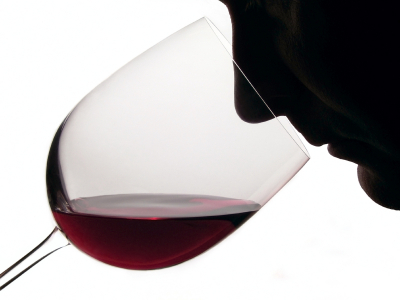 Punca utama kematian telah beralih dari penyakit berjangkit ke penyakit kronik seperti penyakit jantung dan kanser. Penyakit ini mungkin dipengaruhi oleh diet.
Punca utama kematian telah beralih dari penyakit berjangkit ke penyakit kronik seperti penyakit jantung dan kanser. Penyakit ini mungkin dipengaruhi oleh diet.Dalam sebuah kajian yang diterbitkan dalam edisi Januari 2011 Journal of the American Dietetic Association, penyelidik menyiasat data empirik mengenai kelompok pola diet dengan kematian melalui analisis pola makan lebih daripada 2,500 orang dewasa antara usia 70 dan 79 tahun dalam tempoh sepuluh tahun. Mereka mendapati bahawa diet menyukai makanan tertentu dikaitkan dengan penurunan kematian.
Pada tahun 2030, dianggarkan seramai 973 juta orang dewasa berusia 65 tahun atau lebih di seluruh dunia. Tujuan kajian ini adalah untuk menentukan pola diet dari sebuah kumpulan besar dan pelbagai orang dewasa yang lebih tua, dan untuk menjelajah kelompok dari pola diet dengan kehidupan peserta selama tempoh 10 tahun. Tujuan kedua adalah untuk menilai kualiti hidup dan status gizi peserta sesuai dengan pola diet mereka.
Dengan menentukan frekuensi pengambilan 108 jenis makanan yang berbeza, penyelidik membahagikan peserta menjadi enam kumpulan yang berbeza sesuai dengan pilihan makanan utama mereka:
* Makanan sihat (374 peserta)
* Produk susu tinggi lemak (332)
* Daging, makanan bergoreng, dan alkohol (693)
* Bijirin Sarapan Pagi (386)
* Bijirin yang diproses (458)
* Manisan dan pencuci mulut (339)
Kelompok "makanan sihat" ditandai dengan pengambilan yang relatif lebih tinggi produk susu rendah lemak, buah-buahan, biji-bijian, ternakan, ikan, dan sayur-sayuran, dan pengambilan lebih rendah dari daging, makanan bergoreng, manisan, minuman tinggi kalori, dan penambah lemak . Kelompok "produk susu tinggi lemak" mempunyai pengambilan yang lebih tinggi makanan seperti ais krim, keju, dan 2% susu dan yogurt, dan pengambilan yang lebih rendah dari ternakan, produk susu rendah lemak, nasi dan pasta.
Penyelidikan ini unik kerana ia menilai kualiti hidup dan status gizi peserta, melalui reaksi biokimia secara terperinci, sesuai dengan pola diet mereka. Setelah mengawal jenis kelamin, usia, bangsa, masalah klinikal, pendidikan, aktiviti fizikal, merokok, dan pengambilan kalori total, kelompok "produk susu tinggi lemak" mempunyai risiko kematian 40% lebih tinggi daripada kelompok "makanan sihat". Kelompok "manisan dan pencuci mulut" mempunyai risiko 37% lebih tinggi. Tidak ada perbezaan yang signifikan pada risiko kematian antara kelompok "makanan sihat" dan "bijirin sarapan pagi" atau "bijirin yang diproses”.
Menurut penulis Amy L. Anderson, Ph.D., Jabatan Ilmu Gizi dan Makanan, Universiti Maryland, "hasil kajian ini menunjukkan bahawa orang dewasa yang lebih tua yang mengikuti pola diet yang konsisten dengan panduan saat ini untuk mengambil jumlah yang relatif tinggi sayur-sayuran, buah-buahan, biji-bijian, produk susu rendah lemak, ternakan dan ikan, mungkin mempunyai risiko kematian yang lebih rendah. Oleh kerana peratusan besar orang dewasa yang lebih tua dalam kajian ini mengikuti pola diet kelompok 'makanan sihat',. pematuhan terhadap diet seperti muncul cadangan yang sesuai dan realistik untuk meneruskan kehidupan yang berpotensi meningkatkan kualiti hidup pada populasi orang dewasa yang semakin meningkat. "
Artikel tersebut adalah “Dietary patterns and survival of older adults” oleh Amy L Anderson, Ph.D.; Tamara B Harris, M.D., M.S.; Frances A Tylavsky, Dr.P.H.; Sara E Perry, M.A., M.P.H.; Denise K Houston, Ph.D., R.D.; Trisha F Hue, M.P.H.; Elsa S Strotmeyer, Ph.D., M.P.H.; dan Nadine R Sahyoun, Ph.D., R.D. Ia terdapat dalam “ Journal of the American Dietetic Association” Volume 111, Issue 1 (January 2011) terbitan Elsevier.
Picture Credit: www.playproviders.org.uk
Source: Elsevier Health Sciences

















